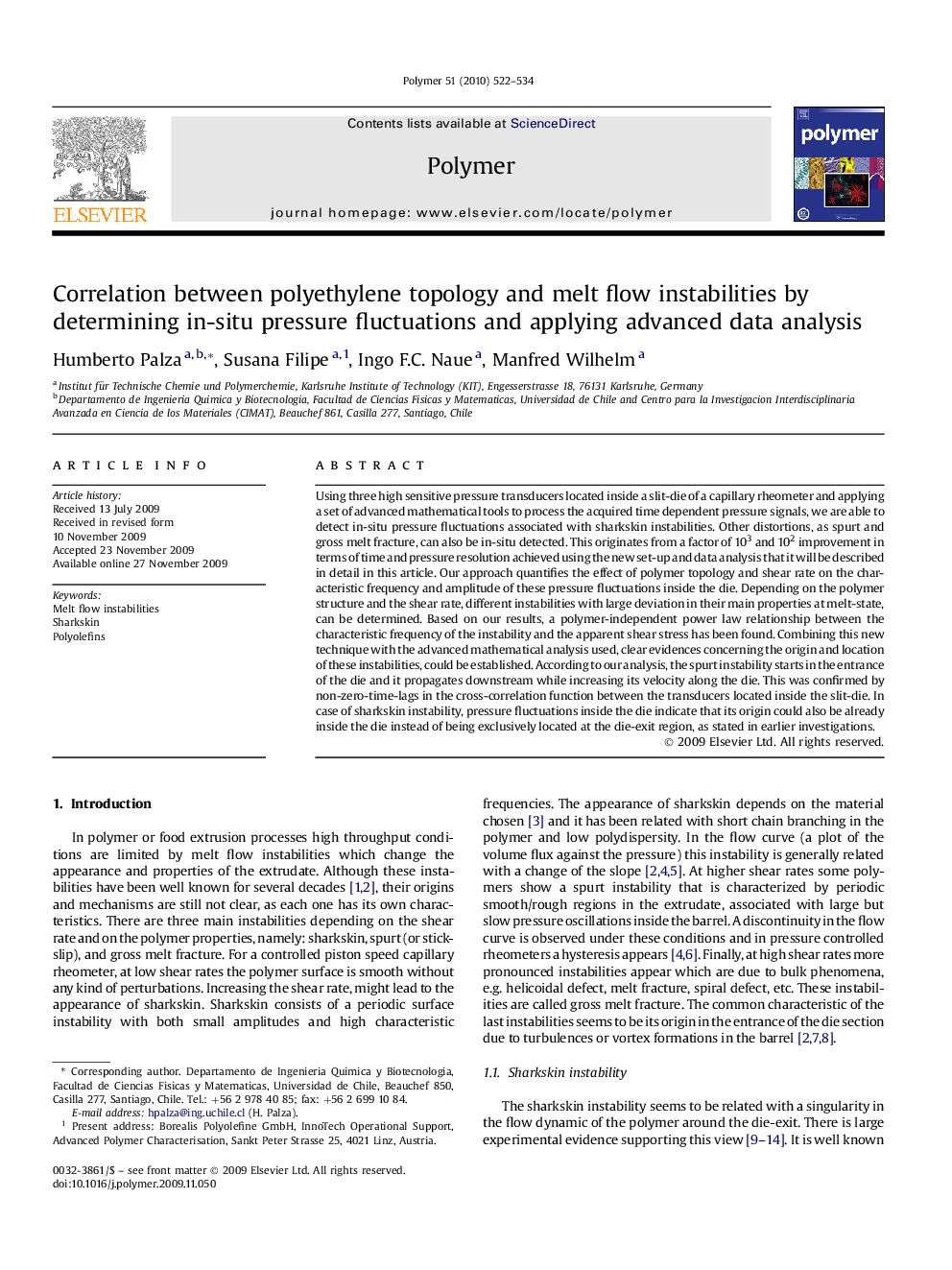| Article ID | Journal | Published Year | Pages | File Type |
|---|---|---|---|---|
| 5185357 | Polymer | 2010 | 13 Pages |
Using three high sensitive pressure transducers located inside a slit-die of a capillary rheometer and applying a set of advanced mathematical tools to process the acquired time dependent pressure signals, we are able to detect in-situ pressure fluctuations associated with sharkskin instabilities. Other distortions, as spurt and gross melt fracture, can also be in-situ detected. This originates from a factor of 103 and 102 improvement in terms of time and pressure resolution achieved using the new set-up and data analysis that it will be described in detail in this article. Our approach quantifies the effect of polymer topology and shear rate on the characteristic frequency and amplitude of these pressure fluctuations inside the die. Depending on the polymer structure and the shear rate, different instabilities with large deviation in their main properties at melt-state, can be determined. Based on our results, a polymer-independent power law relationship between the characteristic frequency of the instability and the apparent shear stress has been found. Combining this new technique with the advanced mathematical analysis used, clear evidences concerning the origin and location of these instabilities, could be established. According to our analysis, the spurt instability starts in the entrance of the die and it propagates downstream while increasing its velocity along the die. This was confirmed by non-zero-time-lags in the cross-correlation function between the transducers located inside the slit-die. In case of sharkskin instability, pressure fluctuations inside the die indicate that its origin could also be already inside the die instead of being exclusively located at the die-exit region, as stated in earlier investigations.
Graphical abstractDownload full-size image
